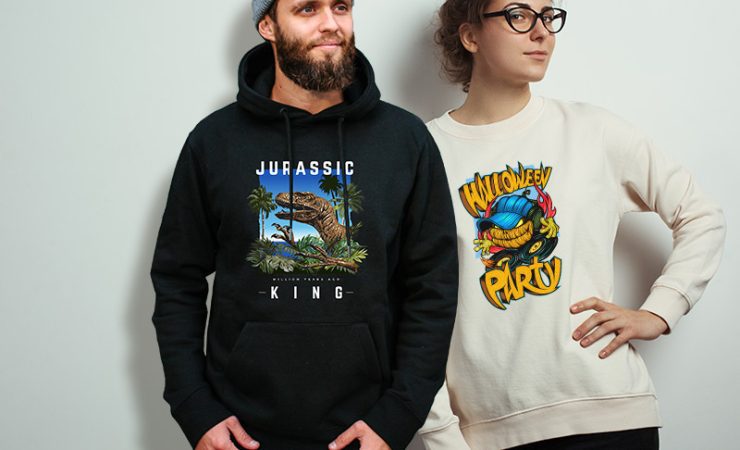In his latest blog Phil McMullin, pro graphics sales manager at Epson UK, explores how digital textile customisation can drive successful businesses.
Desire for customised products is driving digital textile printing growth.
More than a third of consumers are interested in personalized textile products and will pay a premium for them.
These are some of the findings of Smithers’ The Future of Digital Textile Printing to 2026 survey. It predicted digital textile printed volume will increase 13.9% CAGR from 2021 to 2026, to reach 5.531 million square meters annually. During the same period digital textile printed value will increase by 12.7% CAGR to 6.951 billion annually.
During the pandemic digitally printed textiles performed better than the overall textile market. Among the most buoyant sectors was home furnishings which grew as consumers spent time redecorating their homes.
Smithers went on to predict rapid growth from 2021 to 2026 as the overall printed textile industry recovers from the global pandemic.
Asia was expected to return to pre-pandemic levels first – by the end of 2021, followed by North America in 2022 and Western Europe and the rest of the world by the end of 2023.
One of the reasons for this optimism is digital textile printing’s low global printed textile market penetration. It currently stands at 6% and Smither’s expects it to reach 10% as the technology and supply chains catch up with demand.
Technology development is at the core of Epson’s product portfolio. Every day it invests $1.2m to support its systems and solutions including textile printing capabilities.
Among them are the versatile SureColor SC-F3000 DtG printer capable of producing complex designs on a variety of light and dark cotton garments and the SureColor SC-F2100 DtG printer that offers a complete Direct to Garment (DtG) package for designing and printing t-shirts, polo shirts, sweatshirts, baby clothes, tote bags and other cotton items. There is also the the entry level A4 dye- SureColor SC-F100, sublimation printer that is predominately aimed at the gifting market.
The inks are Global Organic Textile Standard (GOTS) and Oeko-Tex Standard 100 compliant too. This ensures suitability for a broader range of applications.
As well as responding to demands for increased short run or customised orders, DTG technology also addresses other industry shaping drivers including:
Sustainability – on demand textile printing produces a low carbon footprint in comparison to traditional textile production. It can reduce water and electricity consumption and offer creatives the flexibility to customise designs and produce exact quantities on demand, with very little waste.
Reshoring – many companies are considering how reshoring can change their practices for the better. They are considering how local production can reduce transportation as part of an increased focus on sustainable practices. They are also reviewing supply chains to deliver the right quantities at the right time.
On demand – an on-demand business model delivers greater control of production in terms of quality, turnaround times, cost, and profitability. The simplicity of the DTG print process makes it ideal to integrate into web 2 print platforms, essentially allowing anyone to start an online T-shirt business while printing what has already been sold eliminates the reliance on mass production, shipping, and storage. It also results in very little waste going to landfill or being sent abroad for disposal.

